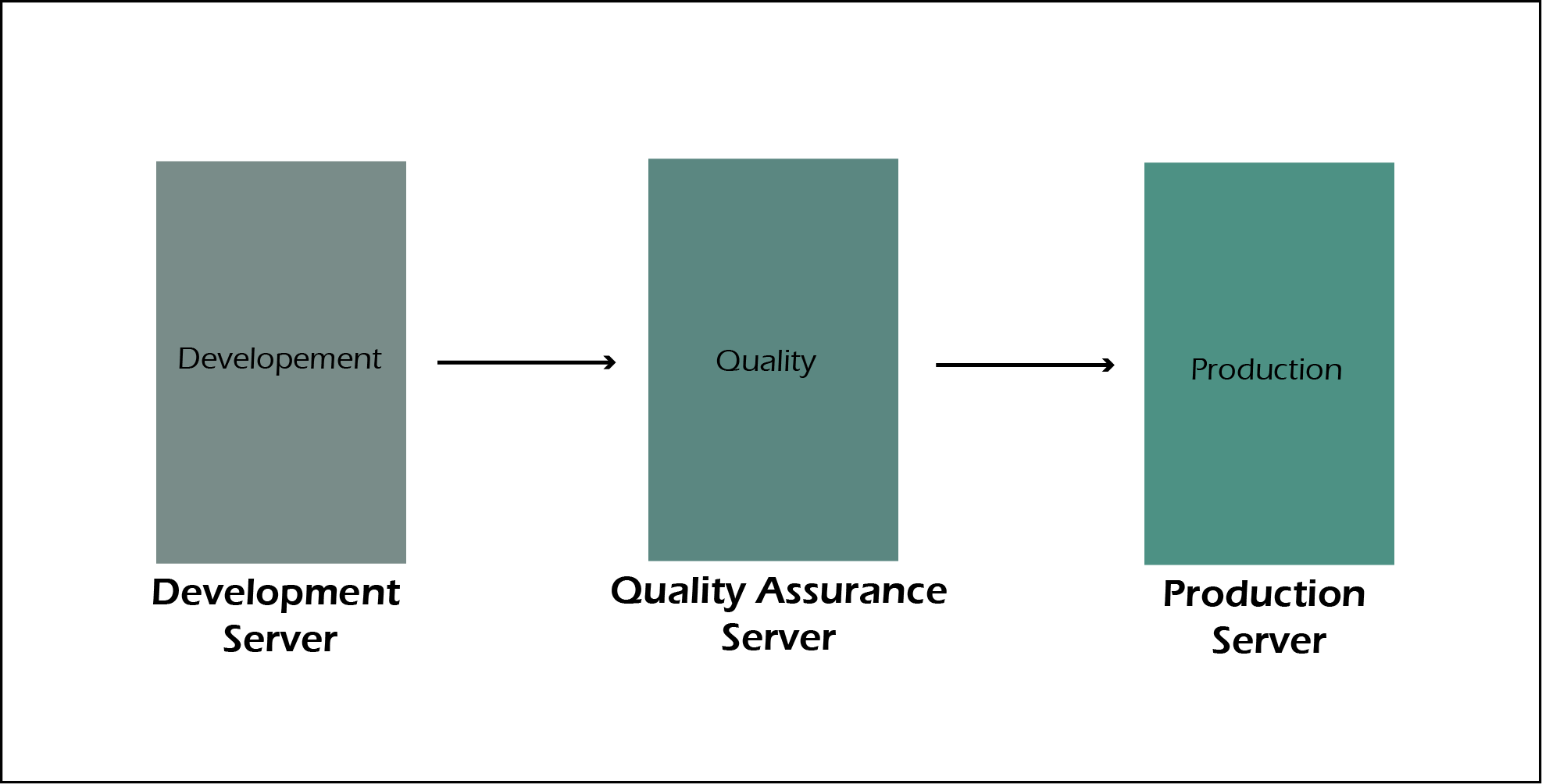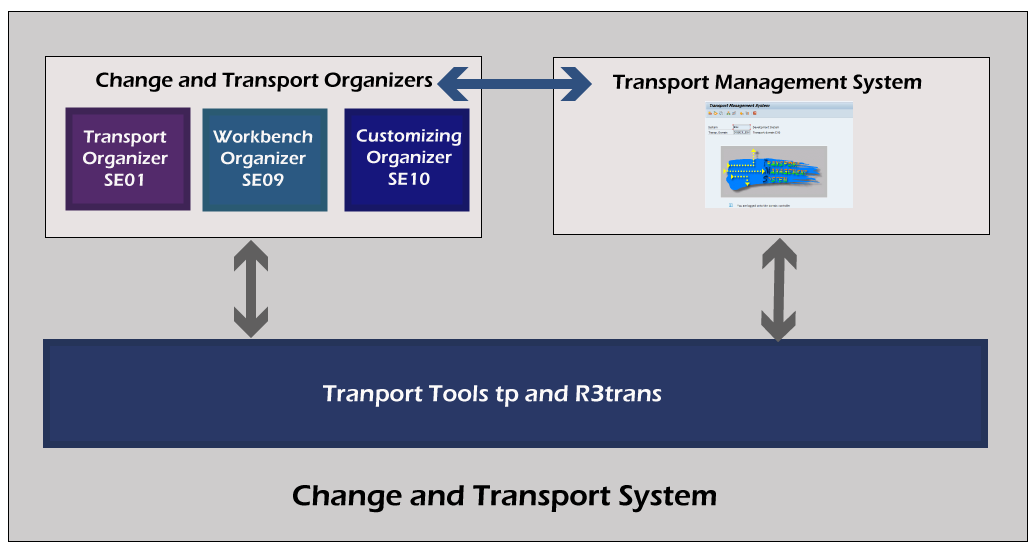SAP BASIS Transport Management System
TMS stands for Transport Management System. TMS is used to move, manage, control, copy development objects like programs, screens etc. and customised settings in an order across the system through predefined transport routes (RFC Connections).
TMS defines, configure and manage the system landscape in SAP environment. The transport process is exporting objects from source SAP system and importing objects into the target system.
SAP Transport Management System (TMS) is a tool to manage termed transports on one or more connected SAP systems. User can organize, perform and monitor transports between SAP Systems using the Transport Management System (TMS).
TMS functions -
- Configuring transport routes using graphical editor
- Displaying import queues for all SAP Systems in transport domain
- Importing all requests in an import queue
- Importing all requests in project
- Importing specific requests
- TMS Quality Assurance
- Transport Workflow
- Transports between SAP Systems without common transport directory

CTS -
CTS helps to organize development projects in ABAP Workbench. CTS stands for Change and Transport System.
CTS is tool helps to organize development projects in ABAP Workbench, creation, documentation and distribution of changes between the SAP systems in system landscape.
CTS is a tool for -
- Configuring systems landscape
- Managing & controlling new development requests.
- Managing transports and recording the source of changes.
CTS Components -

- Change and Transport Organizer (CTO) – It is tool for managing, browsing and registering the changes on the repository and customizing objects. SE01 is the transaction with the new extended view.
- Transport Management System (TMS) - Used to setup transport routes in the SAP System landscape.
- Transport Tools (R3trans and TP) - used by SAP at operating system level to communicate with SAP and database.
R3trans & TP -
R3trans is the SAP system transport program. R3trans used for transporting data between different SAP systems. R3trans called from the tp control program or by the SAP upgrade utilities but not used directly.
tp normally controls the transports. Tp generates the r3trans control files, but the database connection done from R3trans.
Repository -
The existing object modified as per requirement called as enhanced object. New object that is created as part of new requirement is called as new/developed object.
The enhanced and developed objects might client-specific or cross-client. The collection of enhanced and developed objects is called as Repository.
Transport Directory Structure -
To transport the changes from the source system to target system using TMS, there should be some intermediate shared directory to import the modified objects from source system and export to target system. The directory is called as global transport directory (/usr/sap/trans).
The directory resides in Domain Controller System and shared to all member systems which are part of the system landscape. The global transport directory has automatically created subdirectories during the SAP system installation.
These are automatically created and mandatory setting for TMS. Transport Directory acts as a source of changes once the changes released from DEV standpoint.
If the transport directory is not shared among the systems, then the changes placed in transport directory(TD) will not available to the system which can’t able to access the TD. So, the Transport directory should be shared properly among all the systems in landscape.
Subdirectories -
- actlog: Directory for all requests and tasks.
- bin: Directory for Transport Program(tp) and TMS.
- buffer: Directory for declaring each system where the transports to be imported.
- Cofiles: Directory contains Change Request Information files with complete details and commands.
- Data Files: Directory contains the actual data to be used in implementing the change.
- EPS: Directory for advanced corrections and support packages.
- Log: Directory contains Transport logs, traces, statistics used for troubleshooting in case any error occurs in the transport process.
- old data: Directory for archival or deletion.
- sapnames: Directory contains information regarding transport requests made by respective users.
- tmp: Directory contains Temporary and data log files.
Types of Data in SAP System -
Clients create different environment for various kinds of users which are belongs to different user groups. All these clients in the same system and uses the same database but environment is different.
Client is independent unit which creates its own set of data. Considering all the above scenarios, the client-specific data is classified into three types.
- User Master Data: - Contains the user login information which includes username, password and user defaults and the other useful information such as user groups, communication etc. User Master data is physically present in a specific set of tables (the USR* tables). Master data is products master such as vendor, material etc.
- Application/ Operational data: - is client dependent.
- Customizing Data: - Contains the configuration settings. These settings are to customize organizational structure and the business processes for the companies. Customizing data is client dependent and stores in customizing tables.
How the development changes transported?
Development and enhancement changes are normally completed with help of ABAP Workbench and the changes are called as workbench changes. Normally the Workbench changes are cross-client and changes are reflected in all the client of the desired system once those are installed.
To do the same, the modified objects should transport from source system to target system. SAP supports Workbench and TMS are fully integrated to transport the changes from source system to target system.
